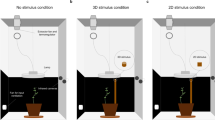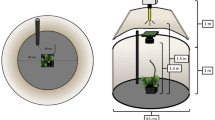Abstract
A GOOD many years ago, Verworn1 developed in some detail a supposed analogy between rhizopod pseudopodia and nerve fibres. He suggested that these represent two extreme types of living substance in which the effects of stimulation are transmitted respectively with and without decrement.
This is a preview of subscription content, access via your institution
Access options
Subscribe to this journal
Receive 51 print issues and online access
$199.00 per year
only $3.90 per issue
Buy this article
- Purchase on Springer Link
- Instant access to full article PDF
Prices may be subject to local taxes which are calculated during checkout
Similar content being viewed by others
References
Verwora, M., "Irritability" (Yale Univ. Press, 1913).
Young, J. Z., Nature, 153, 333 (1944).
Lepeshkin, W. W., Biologia Generalis, 1, 368 (1925).
Sandon, H., Nature, 133, 761 (1934).
Author information
Authors and Affiliations
Rights and permissions
About this article
Cite this article
SANDON, H. Analogy between Pseudopodia and Nerve Fibres. Nature 154, 830–831 (1944). https://doi.org/10.1038/154830b0
Issue Date:
DOI: https://doi.org/10.1038/154830b0
Comments
By submitting a comment you agree to abide by our Terms and Community Guidelines. If you find something abusive or that does not comply with our terms or guidelines please flag it as inappropriate.



